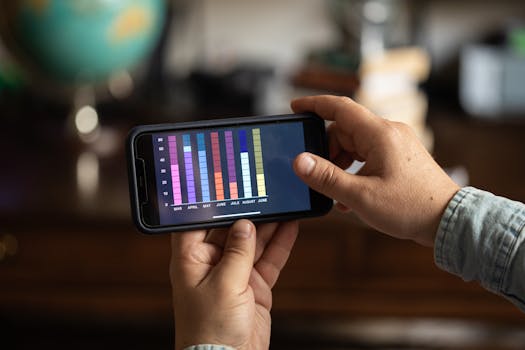Wellness
How Breathing Apps Help Reduce Daily Tension
Discover how breathing apps create daily moments of calm with easy routines, visual cues, and progress tracking that help you manage stress and build resilience in every part of your day.
Advertisement
Squeezing in a moment of calm can feel impossible when work pings and daily plans never pause. Many people discover breathing apps midway through their day, searching for steady ground. The right digital tool can turn scattered minutes into restorative breaks, gently refocusing energy.
Understanding daily tension matters for anyone striving to feel more at ease. Tension creeps in subtly, through traffic, notifications or even a quick disagreement. Breathing apps teach simple habits for steady, manageable relief, encouraging practical routines for genuine stress reduction, one session at a time.
If you’re curious about making pockets of peace a regular part of your life, you’re in the right place. This guide covers practical ways breathing apps teach you to slow down, center yourself, and approach stress with clarity—no complicated routines required.
Creating Breathing Rituals with Consistent Digital Prompts
Setting a daily breathing ritual builds a reliable anchor in your schedule. With automatic reminders from breathing apps, you’ll rarely miss a self-care moment—even on your busiest days.
Think of these prompts like traffic lights on a busy street, gently guiding you back to calm when chaos threatens to take over. Each built-in nudge is a chance to pause, inhale deeply, and improve well-being bit by bit.
Choosing Notification Schedules That Respect Your Flow
It helps to align app reminders with natural pauses in your day: after morning coffee, lunch, or right before family routines. Setting this up in your breathing app increases the likelihood you’ll actually follow through.
For example, Sam pairs a 2 PM notification with a water break: “My phone buzzes, I put my mug down, close my eyes and refocus for three minutes.” Pairing is key.
Link reminders with tasks you already do—then, when the alert comes, you’re primed to act. Customize the schedule so it becomes second nature, and your breathing practice will stick.
Experimenting with Session Lengths and Modes
Short, frequent sessions may fit afternoons packed with meetings, while longer evening routines support wind-down. Many breathing apps offer flexibility, such as a three-minute quick reset or a ten-minute deep relaxation.
Morgan tried the “box breathing” mode for busy mornings: “The four-count cycles help me steady my mind faster than any coffee.” Apps with variety keep your commitment fresh.
Rotate session types during the week. Use energizing styles for post-lunch fatigue or calming ones before bed. This helps your nervous system adapt, training your body to switch gears as needed.
| App Feature | Best For | Personalization | Takeaway |
|---|---|---|---|
| Custom Reminders | Building habits | Flexible times | Sync reminders with routines for better follow-through |
| Session Length Options | Tight schedules | 1-15 minutes | Choose short bursts or longer calm as needed |
| Guided Techniques | Beginners | Multiple styles | Test various modes to match changing moods |
| Progress Tracking | Goal setting | Daily/weekly | Monitor consistency and adjust habits |
| Soothing Sounds | Distraction management | Soundscapes | Mask background noise to enhance relaxation |
Redesigning Stress Responses with In-App Breathing Guides
Learning how to use a guided routine from breathing apps helps soothe your inner alarm system. As you practice timed breathing through a digital coach, physical tension naturally decreases.
Digital guides cut through racing thoughts. Using gentle cues, apps guide you through calming cycles—right when you need it most, rather than later when worry lingers.
Using Visual Cues for Immediate Focus
Visual aids, like moving spheres or expanding circles, give your mind something tangible to follow. This makes it much easier to synchronize breath with motion and forget the outside world for a few moments.
For instance, Jen tracks a rising animation, matching her inhalation to its movement. Watching the visual keeps her present—relaxation becomes automatic, even if the noise level isn’t ideal.
- Breathe with expanding shapes: Focuses your mind, making it less likely to spiral into anxiety and more likely to land on clarity.
- Follow light pulses for timing: Ensures you maintain a slow, steady pace—crucial for activating your body’s natural calming response.
- Sync with animated counts: Offers external structure, especially helpful when you’re too stressed to remember the pattern yourself.
- Use color gradients for mood: Shifting hues gently signal energy or calm, guiding you to the right headspace for the task ahead.
- Pick your favorite motif: Personalizing the look encourages consistent use—your brain links pleasant visuals to a state of relaxation.
When visuals match your mood or energy, stress drops. Breathing apps’ graphic cues help reinforce this positive cycle each time you practice.
Practicing Audio-Guided Routines for Auditory Learners
Audio cues—like a soothing voice or subtle bell—are invaluable if you respond to sound rather than visuals. Many breathing apps offer calm narrations or background tracks for a multisensory experience.
Mark, who’s easily distracted by colleagues, pops in earbuds. “I play a five-minute ocean wave, matching breath to the swell. It’s the only break my brain craves midday.” Sound cues make a difference.
- Choose a narrator you trust: Friendly, confident instructions prompt action and signal that it’s safe to let tension go.
- Experiment with music or nature sounds: Background audio drowns out real-life distractions, creating a pocket of solitude wherever you are.
- Alternate voices or tracks: Rotating styles keeps things fresh, helping long-term consistency.
- Pair with headphones: Physical separation from the environment reinforces a ritual—even in busy spaces.
- Set a volume that soothes, not startles: Gentle sound should melt into the background, not compete for your attention.
Whenever stress builds, return to your saved audio routine. You’ll find that your nervous system quickly learns to associate the sound with relaxation—making relief more accessible.
Applying Breathwork to Acute Stress Triggers
The next time stress surprises you—whether it’s bad news or an uncomfortable meeting—turn to a breathing app’s instant session. Fast access to guided relief turns panic into calm action.
Breathing apps excel in moments when you need an immediate shift from tense to composed, offering techniques designed to reverse shallow breathing and racing thoughts quickly.
Guided Calm-Down After Unexpected Stress
Imagine your supervisor drops by with feedback you didn’t expect. Your shoulders rise, and your pulse accelerates. Instead of spiraling, open your favorite breathing app: pick the quickest session and start, following the cues without overthinking.
The act of focusing on breath, especially with guidance, shifts your nervous system out of “fight or flight”. You’ll notice your shoulders dropping and jaw unclenching after just a minute or two.
Finishing the routine gives you a script for action: “Pause. Breathe for three minutes. Then return to the problem with a clear head.” This builds real resilience over time.
Resetting After Conflict or Mistakes
Arguments or mistakes can stick with you all day—unless you use a quick breathing reset. Apps train you to deliberately exhale tension, making space for a calmer next step.
Some breathing apps include a “reset” mode: three cycles of deep inhale and long exhale, paired with supportive audio. You can walk away, open your app, and follow the instructions instead of replaying the incident mentally.
Here’s a useful checklist for your reset plan:
- Step outside or into a quiet space when possible
- Open the app and select a short calming session
- Follow the visual or audio prompts without multitasking
- Take a drink of water once the session ends
- Write a quick note on how you feel
Repeat as needed—your recovery time will shorten with practice.
Tracking Progress and Motivation with App Features
Getting better at stress reduction takes more than good intentions—it calls for tracking, reflection, and a dash of motivation. Many breathing apps offer built-in features that turn your practice into a rewarding journey.
Progress tracking shows daily streaks, achievement badges, and mood changes—helpful cues that remind you of the impact small actions create over time.
Setting and Celebrating Small Wins
Gamification can make sticking to your daily ritual fun. Visual charts of completed sessions, growing streaks, or unlocked badges keep you returning, especially after tough days.
When you see a five-day streak or hit a milestone like 50 sessions, you’ll want to maintain momentum. Celebrate by sharing your win with a friend or jotting a proud note in your journal—this anchors the habit.
Every minor success adds up. Instead of passively hoping stress fades, you transform into someone who actively manages their well-being, one day at a time.
Noticing Mood Shifts Over Time
Pairing breathing session logs with mood tracking builds self-insight. Some breathing apps let you record how you feel before and after breathing—a clear trail that uncovers patterns missed by memory alone.
Sophia reviews her app and realizes tense Mondays ease up when she does a morning reset. She plans future sessions for those days. Tracking makes stress less mysterious and more manageable.
Look for patterns: “Three calm sessions = relaxed afternoon”. Recognizing these cause-and-effect links helps you refine your schedule and boosts your sense of control over tension.
Encouraging Family or Workplace Calm with Shared Tools
When one person adopts a calm routine, stress relief can ripple out to others. Use breathing apps as a shared resource for friends, family or coworkers, modeling habits that support group well-being.
Group routines foster accountability and create a collective sense of calm. You’ll multiply the benefits by making stress relief a visible, normal part of your environment.
Creating Shared Reminders at Home
Set a phone alarm that nudges the whole family before dinner: “Let’s all take two minutes to breathe together before we eat.” Breathing apps can sync reminders for multiple users or display calming visuals on a tablet in a common room.
Kurt uses the app with his kids before bedtime: “We follow the firefly animation. They love blowing out the pretend candles.” Establishing this routine lowers evening tension for everyone.
Try this at home:
- Pick a daily shared moment—after school, before meals, or during transitions
- Open the breathing app together
- Pick a fun or soothing routine
- Let everyone suggest a visual or sound
- Give a high-five or positive comment once finished
A communal pause smooths out bumpy parts of the day.
Integrating Breathing Apps into Team Breaks
Suggest a weekly “calm huddle” with coworkers: “Let’s try that guided breathing tool after Monday stand-up.” Group use legitimizes self-care, making tension management part of office culture.
Lisa leads by example: “I project the breathing app on our breakroom monitor—nobody feels awkward because everyone tries at once.” Normalizing this reduces burnout and fosters a positive work climate.
Checklist for work integration:
- Ask colleagues for a low-stress time to pause
- Vote on a guide or sound everyone likes
- Keep sessions brief—two to five minutes max
- Rotating session leaders can boost buy-in
- Celebrate milestones like a streak lunch or shoutout
Visible wellness routines help teams decompress faster.
Making Breathing Practices Stick for Lasting Wellness
Building a lifelong breathing practice depends on finding routines that fit your personality and daily pace. Breathing apps shine when they support flexibility while offering structure and fresh features to keep motivation high.
Integrating breathwork can change your baseline tension level. Rather than waiting until stress is overwhelming, consistent breathing rewires your response, gradually leaving you more resilient each week.
Rotating Routines for Engagement
Avoid routine fatigue by varying session types. If you feel stuck, explore new breathing techniques or mix in different sounds and visuals. Discovering fresh features in breathing apps prevents boredom and encourages regular use.
Anna swaps between a wind-down mode after work and an energizing pattern on Mondays for a boost. “I save my favorites and update each weekend,” she says. Adaptation helps the habit grow.
Action step: Schedule tech check-ins twice a month to try new app content. This keeps your practice dynamic and ensures you’re using the most effective tools for current needs.
Scripting a Quick Pause When Stress Builds
Have a pre-planned ritual for when agitation starts. For instance, use the phrase: “Pause, open app, select calming cycle, and breathe until shoulders drop.” Scripting helps prevent avoidance in tense moments.
Nate sticks a reminder near his screen: “If jaw clenches, open the app.” The physical cue makes it easy to re-center, reducing the chance frustration will spiral.
Write your own script, keep it handy, and test it the next time you feel tension rising. Practice turns this response into second nature, supporting long-term wellness.
Building Calm Into Your Day Through Mindful Technology
Breathing apps turn ordinary moments—waiting in line, sitting in a car, or starting your morning—into actionable chances for calm. When routine, technology, and mindfulness work together, you build resilience that lasts all day.
Committing to regular use, syncing reminders to real-life transitions, and sharing positive routines with others transforms breathing apps from a novelty into true wellness tools.
Every conscious breath you take further detaches daily tension from your identity. Over time, the result is not only fewer anxious moments but also a greater sense of agency and empowerment.
You may also like

How to Balance Screen Time with Digital Wellness Tools
Take control with digital wellness tools that track screen time, promote breaks, and encourage mindful tech habits.
Keep Reading



